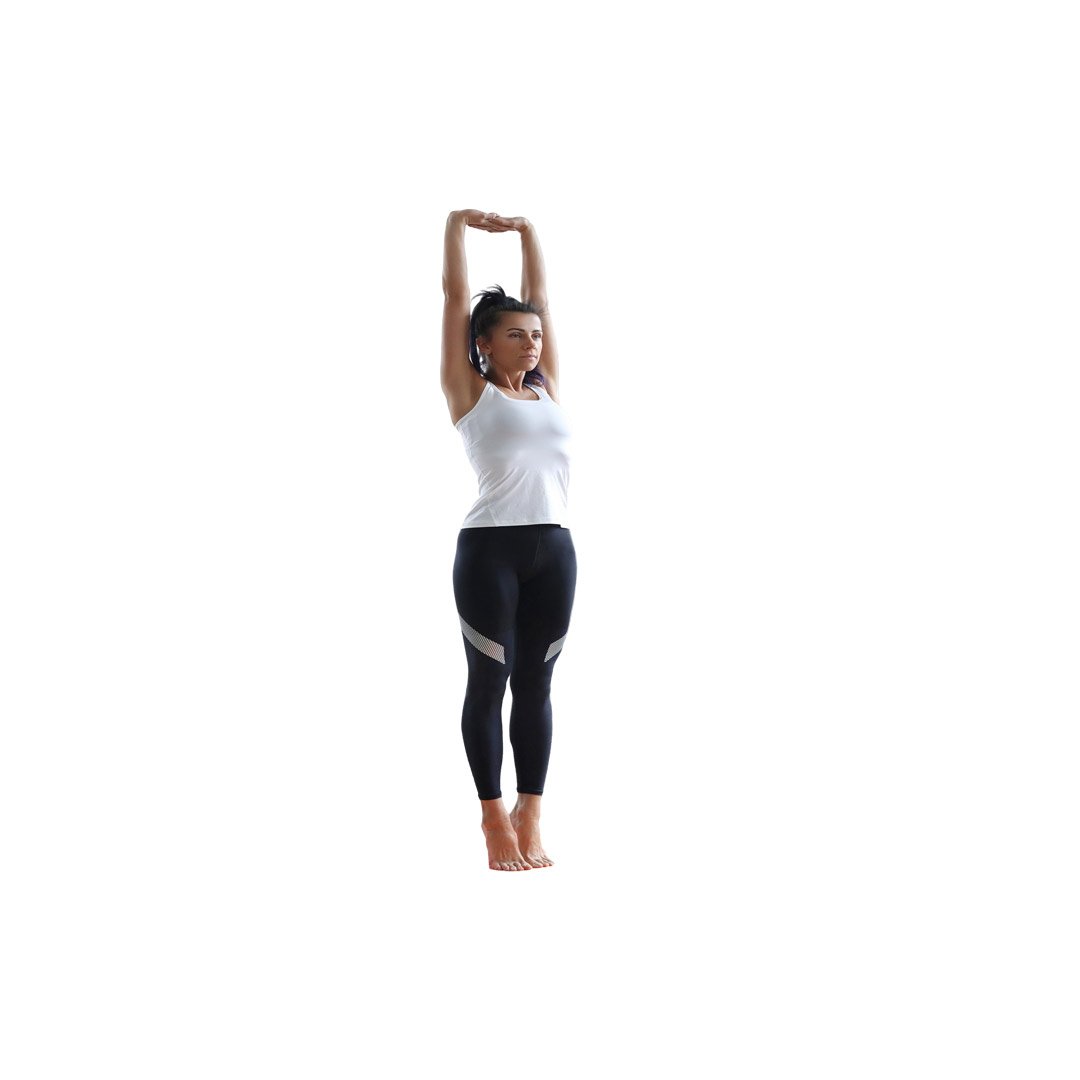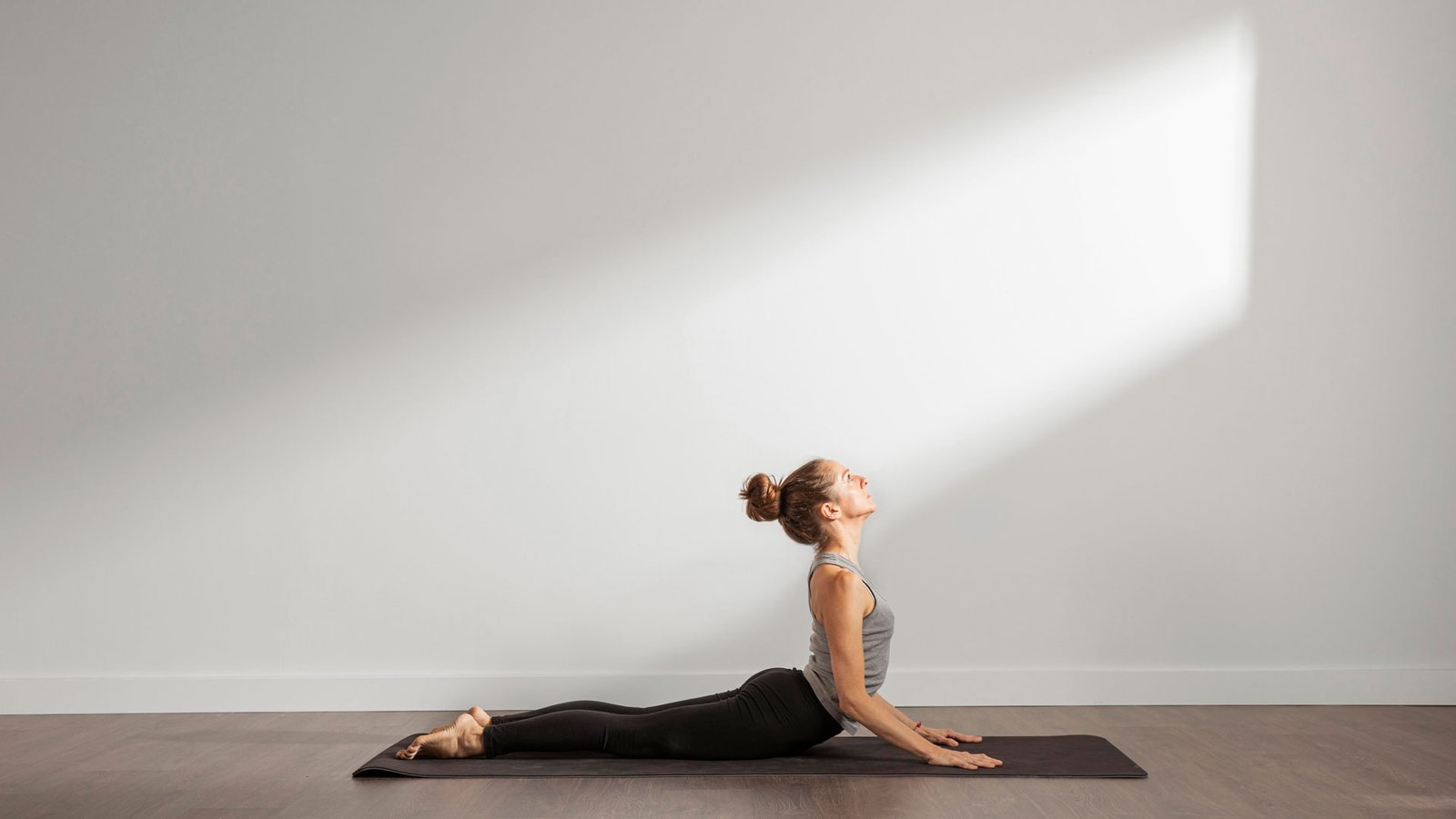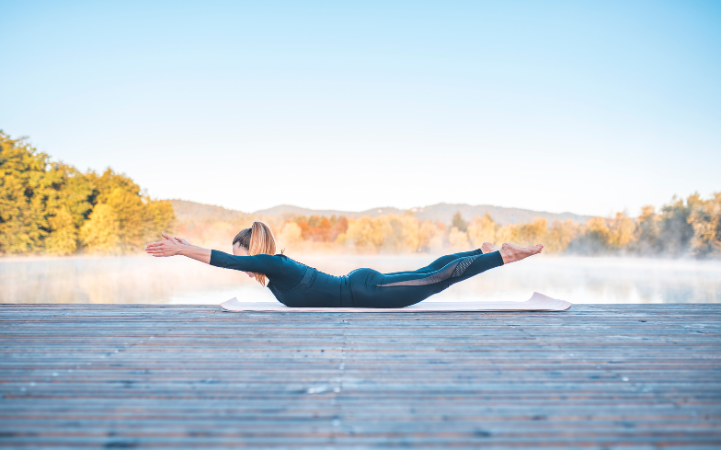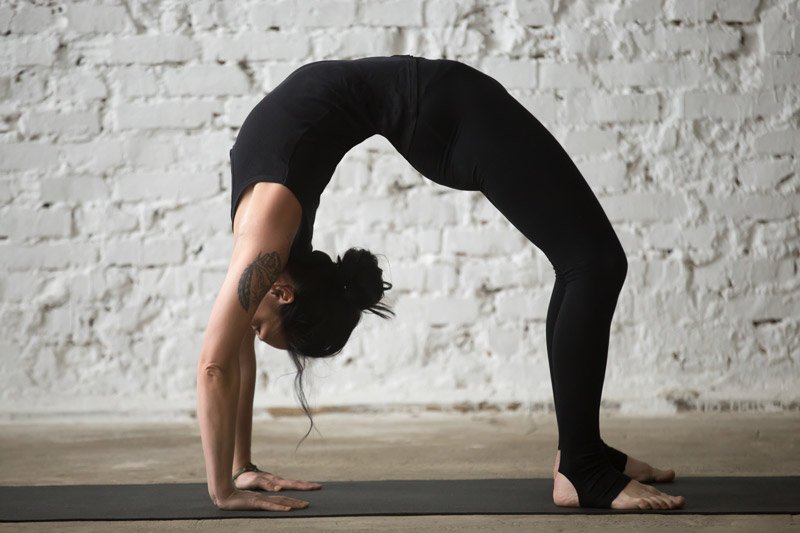Tadasana, also known as Mountain Pose, is one of the most fundamental standing poses in yoga. It is often the starting point for other asanas and serves as a great reminder of the importance of balance, alignment, and grounding. Although simple in appearance, Tadasana is powerful in its ability to improve posture, strengthen the body, and focus the mind. Here, we’ll explore how to perform Tadasana, its benefits, tips to enhance the practice, and precautions to consider.
Steps to Perform Tadasana
- Starting Position: Stand upright with your feet together or hip-width apart if that feels more balanced. Distribute your body weight evenly on both feet.
- Align Your Body: Engage your thighs slightly to lift the kneecaps and draw the tailbone down toward the floor, maintaining a natural curve in the lower back.
- Engage the Core: Activate the abdominal muscles gently to support the spine.
- Lift Through the Chest: Open the chest by rolling the shoulders back and down, creating space in the collarbone area.
- Extend the Arms: Keep the arms relaxed by your sides with the palms facing forward, fingers pointing down, or lift them overhead for an extended Tadasana.
- Focus on the Crown: Lift the crown of your head toward the ceiling as if a string is pulling you upward. Ensure your chin is parallel to the floor and gaze softly ahead.
- Breathe: Inhale deeply and hold the position for 30 seconds to 1 minute, maintaining a steady and calm breath throughout.
Benefits of Tadasana
- Improves Posture: Tadasana helps align the spine, pelvis, and head, promoting an upright posture that supports daily activities and reduces the risk of musculoskeletal problems.
- Strengthens Legs and Core: Engaging the legs, thighs, and abdominal muscles strengthens these areas and contributes to better body awareness.
- Enhances Balance and Stability: Practicing Tadasana regularly improves balance and stability, enhancing coordination and control.
- Increases Body Awareness: This pose fosters mindfulness, encouraging practitioners to be present in the moment and more attuned to their bodies.
- Boosts Energy Levels: Standing tall and breathing deeply can revitalize energy levels and combat fatigue.
Tips for Practicing Tadasana
- Focus on Alignment: Imagine your body as a vertical line, with each part from the feet to the crown of the head aligned perfectly.
- Ground Your Feet: Root down through all four corners of your feet to ensure balance and stability.
- Engage Muscles Evenly: Pay attention to engaging your legs, core, and arms without overly tensing any one area.
- Mind Your Breath: Incorporate deep, mindful breathing to connect with your body and enhance the calming effects of the pose.
- Practice Variations: Try lifting your heels to challenge your balance or extending your arms above your head for a deeper stretch.
Cautions and Contraindications
- Balance Issues: If you have difficulty maintaining balance, consider practicing the pose near a wall or using a chair for support.
- Vertigo or Dizziness: Those with vertigo should practice cautiously, focusing on grounding and moving slowly.
- Injury Considerations: If you have recent or chronic injuries in the feet, knees, or lower back, modify the pose as necessary to avoid strain.
- Pregnancy: Pregnant women should practice with care and avoid overstretching or any movement that compromises balance.
asana is much more than just standing on your mat—it is a foundational posture that provides both physical and mental benefits. Whether practiced as part of a yoga sequence or as a standalone exercise, Tadasana helps cultivate awareness, strength, and balance. Incorporating this simple yet effective pose into your daily routine can promote overall well-being and prepare your body and mind for more complex asanas. Always remember to listen to your body and adjust the practice as needed for your personal comfort and safety.






